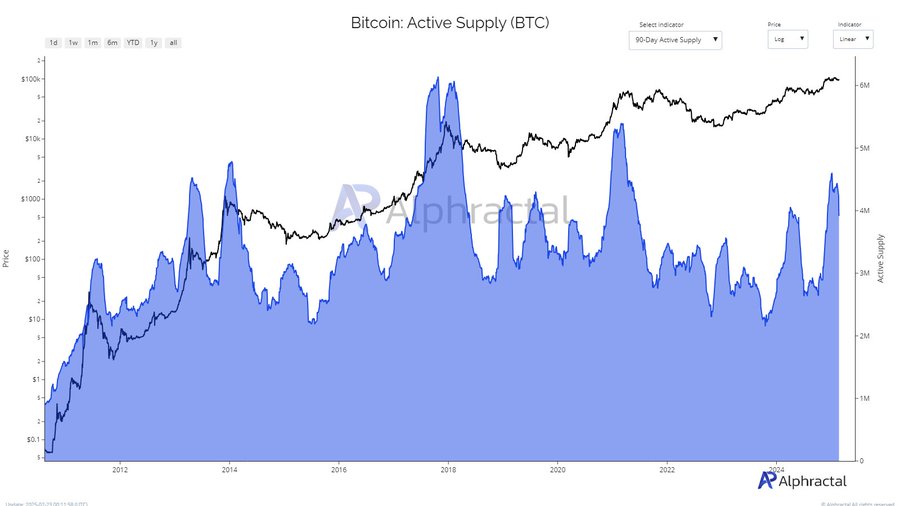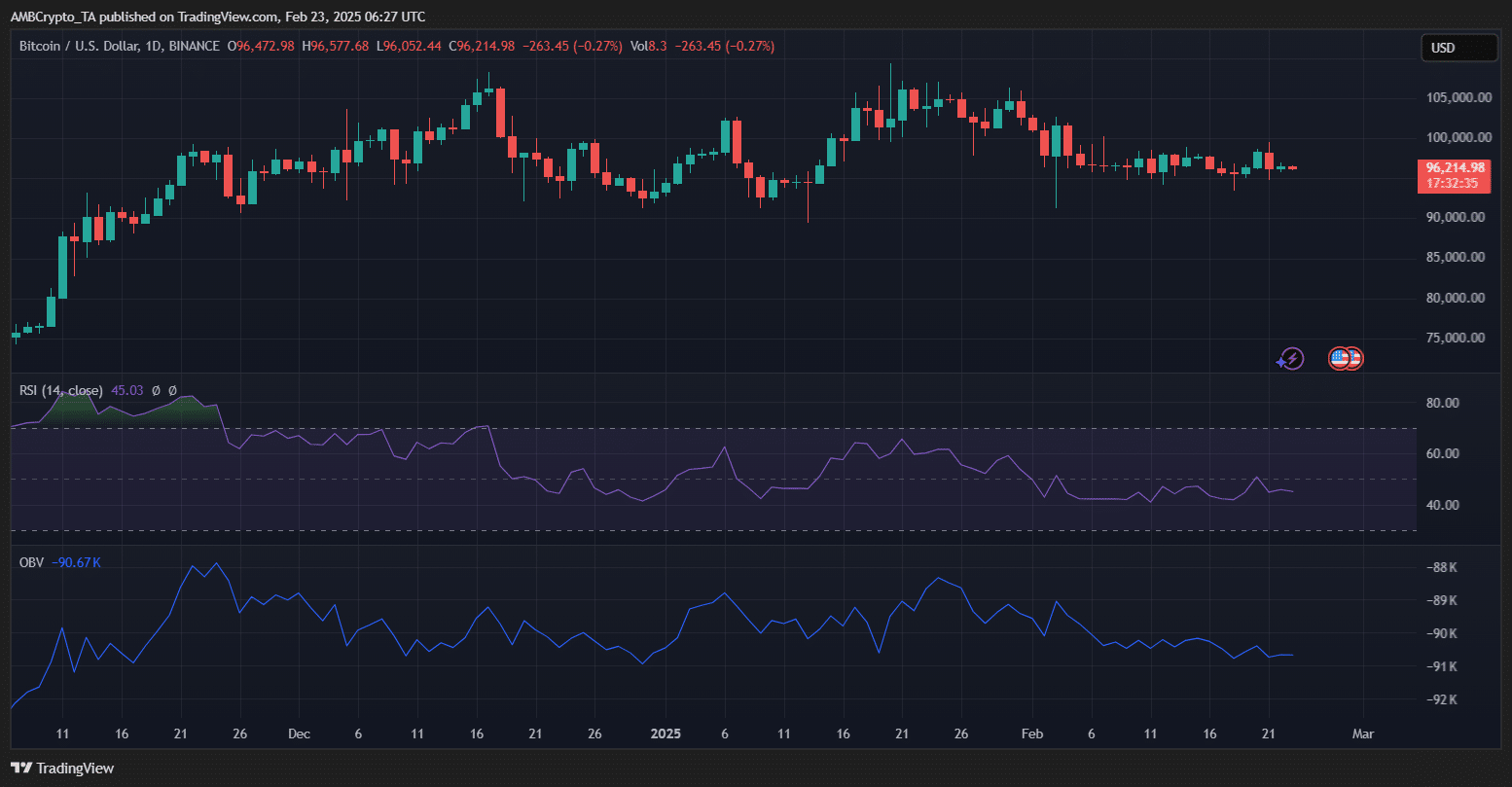- Bitcoin’s 90-Day active supply is falling, signaling lower short-term trading activity and demand.
- The decline in active supply may indicate a potential price consolidation or further dip.
In recent weeks, Bitcoin’s [BTC] 90-Day active supply has been on a noticeable decline, raising questions about the current state of market demand and investor sentiment.
This has long been used to assess both the level of new market interest and the overall mood of traders.
As the metric continues to fall, it’s crucial to understand what this shift could mean for Bitcoin’s price movement and what trends investors should watch for in the coming months.
Active supply, market demand, and sentiment
The 90-Day Active Supply helps to read into both market demand and sentiment by tracking the Bitcoin that has been transacted at least once within a 90-day period.
A high active supply typically signals increased market participation, often reflecting rising demand from new or short-term traders.
Conversely, a decline in active supply may indicate reduced interest or a shift in sentiment, as long-term holders are less likely to sell during periods of lower market activity.
Historically, significant shifts in active supply have correlated with changes in market mood, often signaling potential price fluctuations and trends.
Factors behind the shift in market behavior
The recent decline in Bitcoin’s 90-Day Active Supply pointed to a reduction in short-term trading activity, signaling less interest from new market participants.
If this trend continues, it suggests that Bitcoin’s price may either consolidate sideways for an extended period or experience a slight dip.
Several factors contribute to this shift.
After Bitcoin’s surge past the $100,000 mark following President Donald Trump’s election, the market has faced heightened volatility, driven by policy uncertainties and inflation concerns.
This has led to more cautious trading behavior.
Additionally, the SEC’s decision to drop its case against Coinbase has created a more favorable regulatory environment, encouraging long-term holding over active trading.
As institutional interest grows, market participants seem to be adopting a wait-and-see approach, which could further impact the active supply metric moving forward.
Historical trends and patterns in Bitcoin’s active supply
A review of historical Bitcoin cycles reveals that the active supply tends to rise during bull market peaks and contract in early-stage rallies or post-halving consolidation periods.
The chart indicates previous spikes in active supply during Bitcoin’s major price surges in 2013, 2017, and 2021, followed by steep declines during corrective phases.

Source: Alphractal
Notably, the recent downturn in active supply mirrors trends observed before major breakouts, suggesting that current market participants are holding onto their assets in anticipation of a higher price leg.
If this pattern holds, Bitcoin could be in a consolidation phase before another upward move.
Has this impacted BTC’s price?
Bitcoin was trading at $96,214 at press time, showing a 0.27% decline in the last 24 hours. The RSI at 45.03 indicated that BTC is in neutral territory, neither oversold nor overbought.
The OBV was trending downward, indicating weakening buying pressure, which aligned with the decline in 90-Day active supply.


Source: TradingView
BTC has been consolidating below the $100,000 mark after failing to establish a clear breakout.
The diminishing short-term trading activity indicates that investors are cautious, likely waiting for stronger catalysts. If BTC fails to reclaim momentum, a pullback toward $90,000 remains possible.
However, if demand picks up, BTC could attempt another push toward psychological resistance at $100,000.

